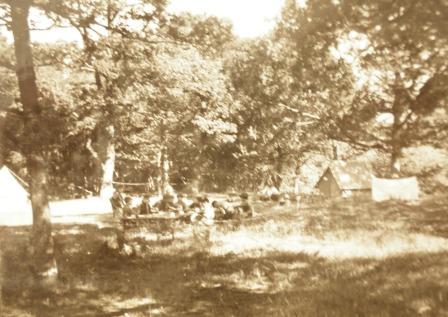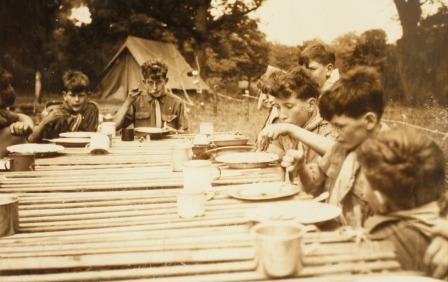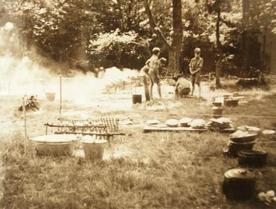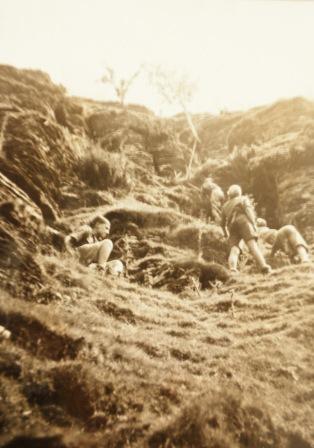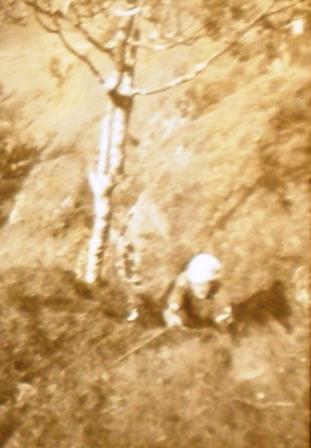Camp at Llanfechan 1950-1952
Nick Bomford (1947-1952)
|
At the end of the summer term there was the week long Aymestey School scout camp for the senior year groups on the banks of the river Irfon at Llanfechan near Builth Wells. I attended three of these, travelling there on the first occasion with all our baggage by a complicated cross-country rail journey from Worcester involving two changes of train and on the other two in an open-backed furniture van which induced torments of travel sickness in those prone to it. |
|
Dan managed the camps brilliantly, giving us the run of semi-wild country without any intrusion from the outside world: watches set back to GMT, washing up and bathing in the river, two hours free time in the evening for us to entertain ourselves while he fished. He made a practice of giving fish that he had caught to patrol leaders for their breakfast next day. It was a matter of some sadness to me that when my eagerly awaited turn came the cooks on duty had not understood that a trout should be gutted before being cooked.
|
He imbued in us a healthy respect for the vagaries of the weather, and woe betide the hapless ‘clot’ whose groundsheet was allowed to poke out under the wall of his tent. (‘Cuthbert the clot’ was his favourite idiot boy). If it rained, and it sometimes did, we had to make the best of it; there was no shelter other than our patrol tents.
Every night, solo and unaccompanied, he sang Gilbert and Sullivan operas to us around the camp fire as we lay on our raincoats sipping strong sweet cocoa in the dark. Pure magic.
|
There were expeditions – once to climb the Brecon Beacons and twice, forever etched in my memory, to Cwm Craig Ddu, a valley with a precipitous side which we scaled with ropes, an operation which I found terrifying. On the first occasion another boy, similarly affected, urged me to join him singing the hymn ‘Through the night of doubt and sorrow’ as we huddled together gathering our courage before hauling ourselves up the next stage. |
In my final year my patrol, the Pigeons, had passed the most tests and as a result I found myself senior patrol leader with responsibility for hoisting and lowering the Union Jack at the morning and evening inspection parades.
Years later, on a nostalgic return visit to the site, the owner of the farm told us that other old Aymestrey boys had also made the same pilgrimage. It was still possible to see the imprint of some of the earthworks in the ground.
